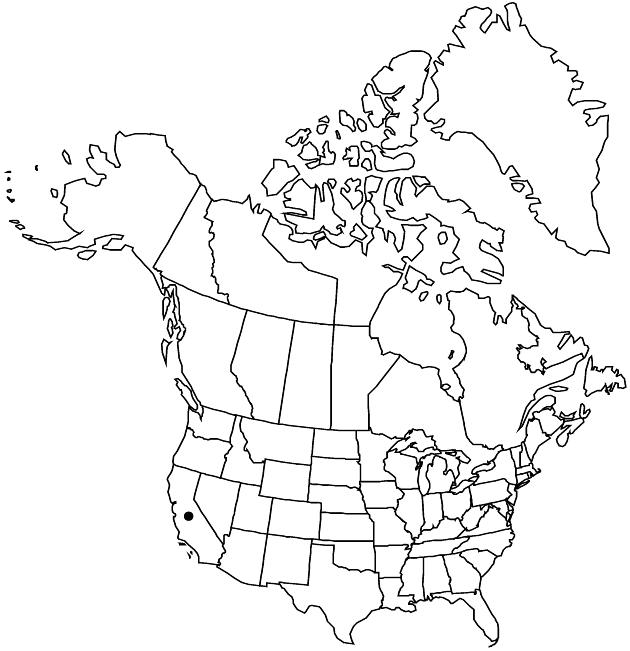Chaenactis glabriuscula var. heterocarpha
Univ. Calif. Publ. Bot. 3: 190. 1907.
Plants 6–40 cm; proximal indument grayish, arachnoid to sparsely lanuginose. Stems mostly 1–5, erect to spreading; branches proximal and, often, distal. Leaves basal (often withering) and ± cauline, 1–6 (–10) cm; largest blades ± 3-dimensional, scarcely succulent, usually 2-pinnately lobed; primary lobes 2–7 pairs, remote to ± congested, ultimate lobes ± involute and/or twisted. Heads mostly (1–) 2–5 per stem. Peduncles 2–7 (–9) cm. Involucres ± hemispheric to broadly cylindric. Phyllaries: longest 6–10 × 1.5–2.5 mm; outer glabrescent to sericeous and, often, ± glandular in fruit. Florets: inner corollas 4.5–7 mm. Cypselae 4–9 mm; pappi of (5–) 8 scales in 2, abruptly unequal series, longest scales mostly 2–7 mm, lengths 0.4–0.9 (–1) times corollas. 2n = 12.
Phenology: Flowering Mar–Jun.
Habitat: Slopes, ridges, mostly over serpentine, openings in chaparral, woodlands
Elevation: 100–1500 m
Discussion
Variety heterocarpha is known mainly from west-central and northwestern California. It intergrades to minor degrees with vars. megacephala, lanosa, and glabriuscula at its southern limits. Most of the specimens from the Tehachapi Mountains region assigned to this taxon appear to represent hybrids between C. xantiana and vars. megacephala or glabriuscula (see sectional discussion). Chaenactis tanacetifolia is an occasional form with leaves mostly basal, persistent, and densely arachnoid, and lobes more congested; its taxonomic significance remains to be demonstrated.
Selected References
None.
Lower Taxa
"-0.9(-1)timescorollas" is not declared as a valid unit of measurement for this property.
